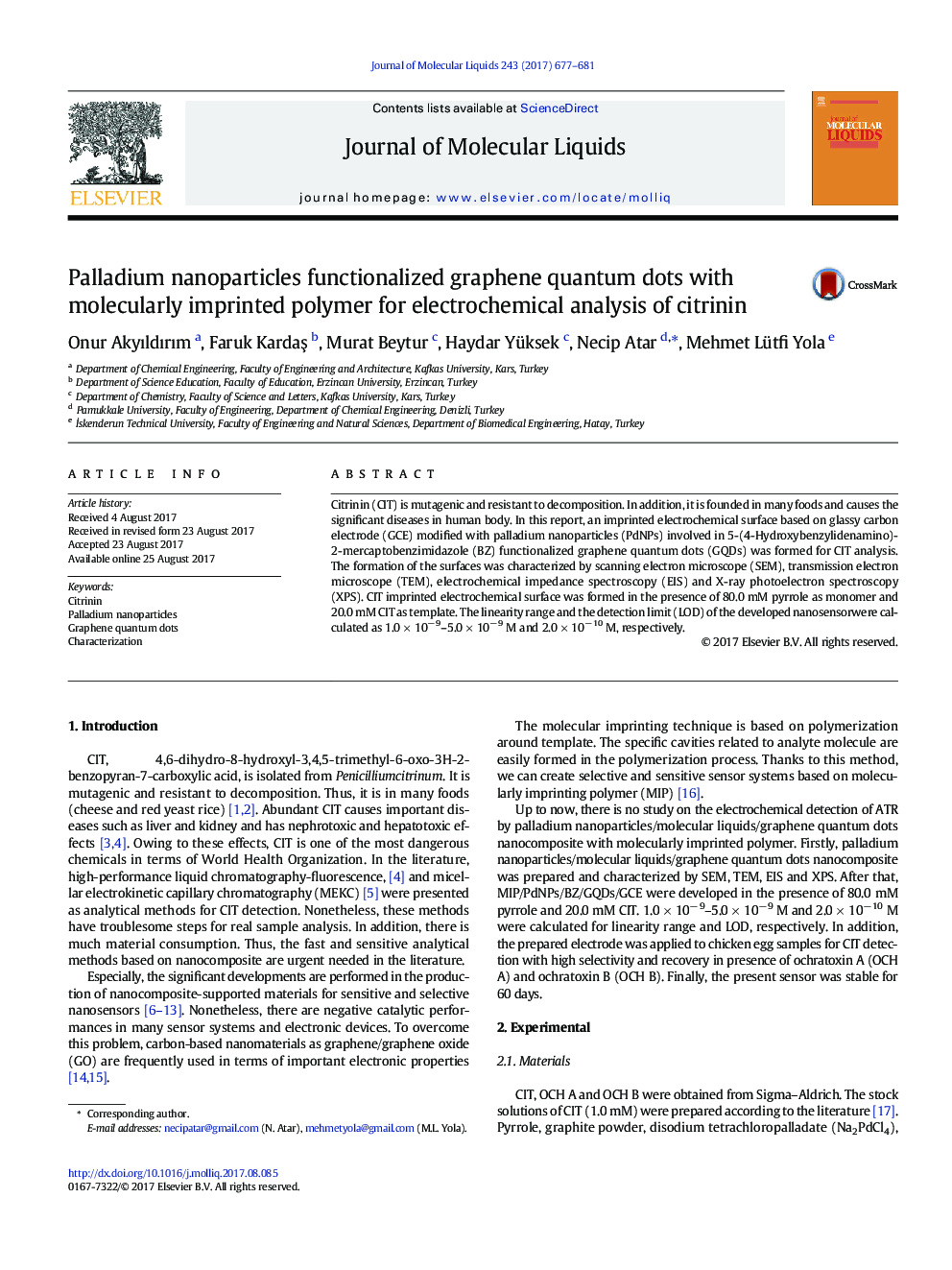| Article ID | Journal | Published Year | Pages | File Type |
|---|---|---|---|---|
| 5408020 | Journal of Molecular Liquids | 2017 | 5 Pages |
Abstract
Citrinin (CIT) is mutagenic and resistant to decomposition. In addition, it is founded in many foods and causes the significant diseases in human body. In this report, an imprinted electrochemical surface based on glassy carbon electrode (GCE) modified with palladium nanoparticles (PdNPs) involved in 5-(4-Hydroxybenzylidenamino)-2-mercaptobenzimidazole (BZ) functionalized graphene quantum dots (GQDs) was formed for CIT analysis. The formation of the surfaces was characterized by scanning electron microscope (SEM), transmission electron microscope (TEM), electrochemical impedance spectroscopy (EIS) and X-ray photoelectron spectroscopy (XPS). CIT imprinted electrochemical surface was formed in the presence of 80.0 mM pyrrole as monomer and 20.0 mM CIT as template. The linearity range and the detection limit (LOD) of the developed nanosensorwere calculated as 1.0 Ã 10â 9-5.0 Ã 10â 9 M and 2.0 Ã 10â 10 M, respectively.
Related Topics
Physical Sciences and Engineering
Chemistry
Physical and Theoretical Chemistry
Authors
Onur Akyıldırım, Faruk KardaÅ, Murat Beytur, Haydar Yüksek, Necip Atar, Mehmet Lütfi Yola,
